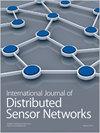New timestamp mark–based energy efficient time synchronization method for wireless sensor networks
IF 2.5
4区 计算机科学
Q3 COMPUTER SCIENCE, INFORMATION SYSTEMS
International Journal of Distributed Sensor Networks
Pub Date : 2022-11-01
DOI:10.1177/15501329221135516
引用次数: 0
Abstract
Aimed at the demands of wireless sensor networks for high energy-efficient time synchronization, the reduction of synchronization energy consumption is studied from the aspects of both accurate timestamps marking and synchronous information transmission mechanism. First, the network is divided into several parent–child groups periodically. The group-wise pair selection algorithm is used to select the network’s pairwise synchronization nodes, and chain-type network topology is thus generated. Second, the sequential multi-hop synchronization algorithm is introduced to realize the synchronization information exchange among pairwise synchronization nodes. The overhearing synchronization (OS) nodes obtain the synchronization information packet based on a one-way overhearing mechanism. Moreover, the accurate acquisition of the synchronization ack packet’s timestamp is carried out through the use of receiving-time-plus-fixed-delay mode. Third, the joint maximum likelihood method and the minimum variance unbiased estimation method are used to estimate the clock offsets of pairwise synchronization nodes and overhearing nodes to the parent nodes, respectively, based on which the child nodes adjust their local virtual clocks. Periodically, the pairwise synchronization nodes initiate the network’s time synchronization, estimate, and broadcast the relative offset to the gateway node, assisting the upper layer child nodes in synchronizing to the gateway node. Simulation results show that the proposed method not only achieves the millisecond level synchronization accuracy but also reduces the synchronization energy consumption and thus improves the network lifetime.一种基于时间戳标记的无线传感器网络节能时间同步方法
针对无线传感器网络对高能效时间同步的需求,从精确的时间戳标记和同步信息传输机制两个方面研究了降低同步能耗的方法。首先,网络被周期性地划分为几个父子组。利用分组对选择算法来选择网络的成对同步节点,从而生成链式网络拓扑。其次,引入了顺序多跳同步算法,实现了成对同步节点之间的同步信息交换。监听同步(OS)节点基于单向监听机制获得同步信息包。此外,通过使用接收时间加固定延迟模式来准确获取同步ack包的时间戳。第三,使用联合最大似然方法和最小方差无偏估计方法分别估计成对同步节点和侦听节点到父节点的时钟偏移,子节点基于该偏移调整其本地虚拟时钟。成对同步节点周期性地启动网络的时间同步,估计并向网关节点广播相对偏移,帮助上层子节点同步到网关节点。仿真结果表明,该方法不仅达到了毫秒级的同步精度,而且降低了同步能耗,提高了网络寿命。
本文章由计算机程序翻译,如有差异,请以英文原文为准。
求助全文
约1分钟内获得全文
求助全文
来源期刊
CiteScore
6.50
自引率
4.30%
发文量
94
审稿时长
3.6 months
期刊介绍:
International Journal of Distributed Sensor Networks (IJDSN) is a JCR ranked, peer-reviewed, open access journal that focuses on applied research and applications of sensor networks. The goal of this journal is to provide a forum for the publication of important research contributions in developing high performance computing solutions to problems arising from the complexities of these sensor network systems. Articles highlight advances in uses of sensor network systems for solving computational tasks in manufacturing, engineering and environmental systems.

 求助内容:
求助内容: 应助结果提醒方式:
应助结果提醒方式:


